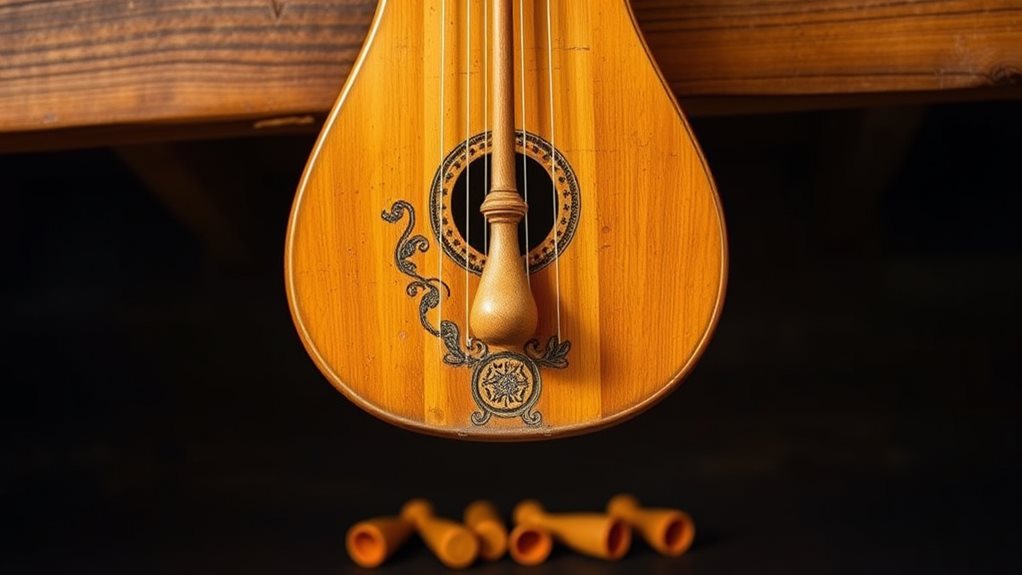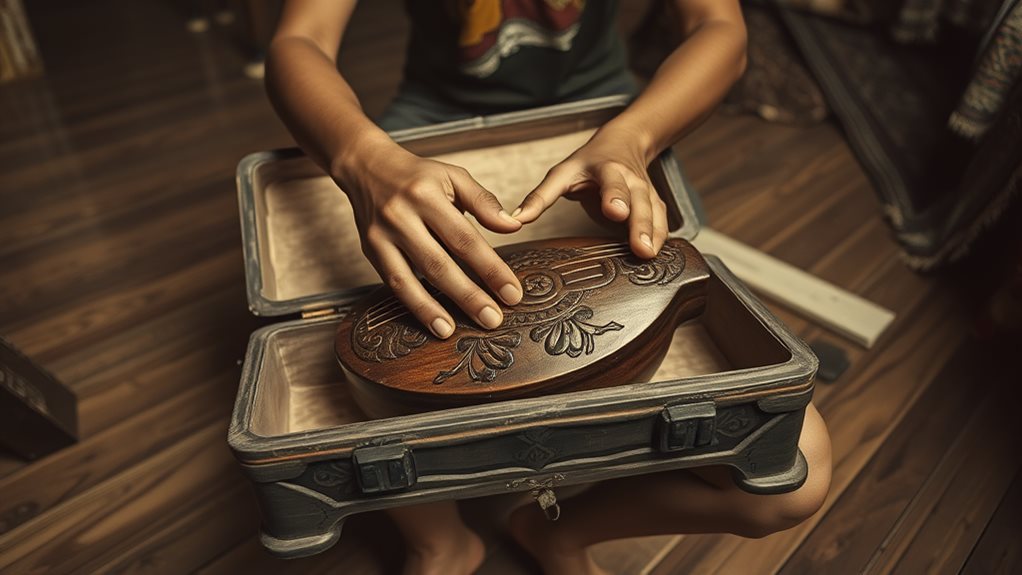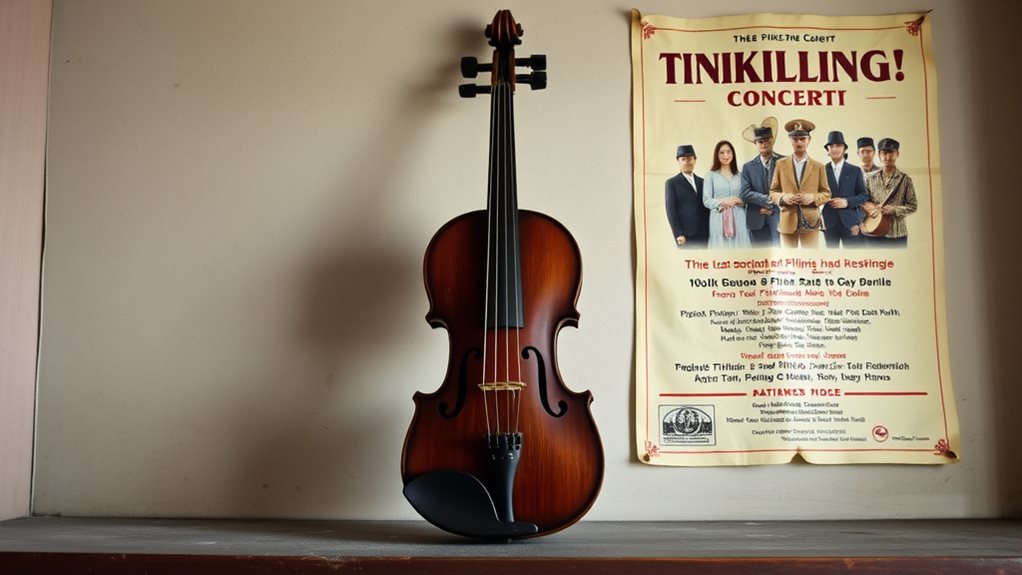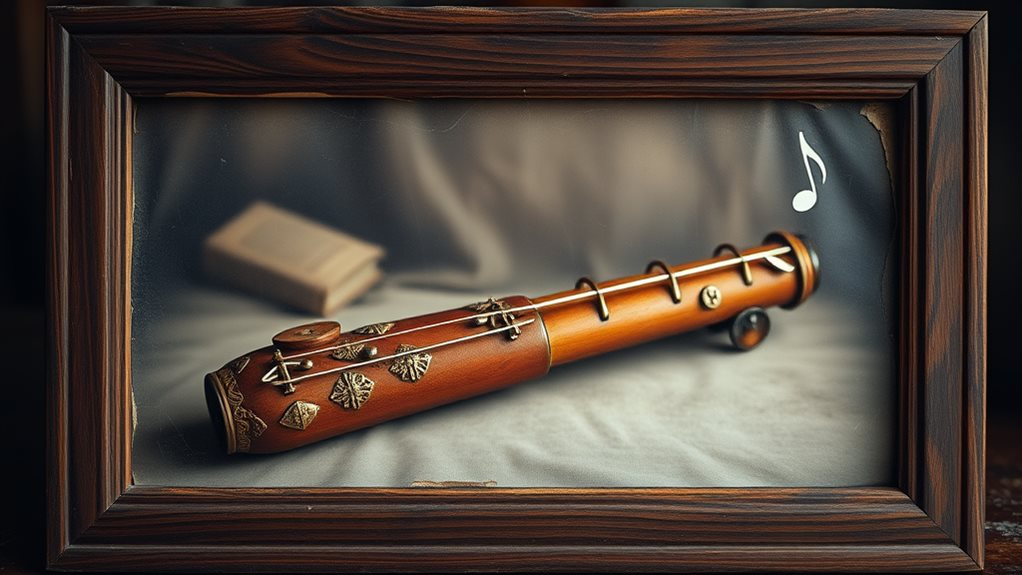The Philippines is home to a diverse array of lesser-known musical instruments that are on the brink of extinction.
These instruments are an integral part of the country’s indigenous music and symbolize the creativity and resourcefulness of the Filipino people. They also hold significant cultural and spiritual importance.
Ancient bamboo percussion instruments, such as the Bungkaka and Patteteg, are examples of these lesser-known instruments. The Bungkaka is a bamboo instrument used in the Cordillera region, while the Patteteg is used in the southern region of Mindanao.
Rare wind instruments, like the Palendag and Tulali, are also on the verge of extinction. The Palendag is a flute-like instrument used by the Maguindanao people, while the Tulali is a nose flute used by the Kalinga people.
Learning about these forgotten melodies can uncover the timeless beauty of the Philippines’ musical past. By discovering more about these instruments, one can gain a deeper appreciation for the country’s rich cultural tapestry.
Ancient Bamboo Percussion Instruments

Ancient Bamboo Percussion Instruments of the Philippines****
Traditional bamboo percussion instruments have played a vital role in shaping the Philippines’ musical heritage. Five unique instruments showcase bamboo craftsmanship: Bungkaka, Patteteg, Tongatong, Kalutang, and their regional variations.
Each instrument has distinct characteristics, uses, and cultural significance. Bungkaka’s buzzing sound is integral to Filipino folk music and dance performances. For instance, the Ifugao, Kalinga, and Ibaloi tribes have their own Bungkaka traditions, with unique playing techniques that set them apart.
Patteteg, or the bamboo leg xylophone, holds cultural and spiritual significance among the Cordillera tribes. Similarly, Tongatong is used to communicate with spirits in Kalinga rituals, believed to have healing properties.
Craftsmanship played a vital role in traditional music in the Cordillera, with instruments featuring resourcefulness and creativity, passed down through generations.
Instruments were integral to the cultural practices of these indigenous groups, used in ritual and everyday life in Katagalugan provinces.
Understanding bamboo craftsmanship and the cultural significance of these traditional instruments requires attention to nuanced details.
Rare Wind Instruments of the Philippines
Lesser-Known Filipino Musical Instruments That Are Nearly Extinct
Rare Wind Instruments of the Philippines
The Philippines is home to a diverse array of wind instruments, each with its own unique cultural significance. Historical contexts have influenced the development of these instruments.
In the northern Philippines, traditional wind instruments like the Palendag and Tulali are used in ceremonial and folk music contexts. The Palendag, a wooden flute, is played during traditional ceremonies and celebrations.
The Tulali, a type of flute used by the Talaandig people, is known for its distinct sound and cultural importance.
In the southern Philippines, wind instruments are influenced by Muslim and indigenous cultures, such as the Tumpong nose flute. Other regions, like Luzon Island and the Visayas and Mindanao, have their own unique wind instruments, each with its own historical and cultural significance.
For example, the Saggeypo, a flute-like instrument from northern regions, is used in folk music and rituals.
Preserving these rare wind instruments and their playing techniques is crucial to maintaining cultural heritage and traditional music practices in the Philippines.
Endangered Field-Plays on String

The preservation of traditional string instruments in Filipino indigenous communities is crucial. These instruments hold significant cultural importance and are an integral part of the community’s identity.
Examples of Traditional String Instruments
- Karatok: A string instrument used by the T’boli people of Mindanao, known for its distinctive sound and cultural importance, where music plays a central role in their religious and daily life.
- Toto: A traditional string instrument from the Kalinga province, used in various cultural celebrations and ceremonies, passed down through generations.
- Kabbir: A string instrument from the Ifugao province, known for its unique sound and cultural significance, particularly in their traditional music and dance performances.
Cultural Significance of Traditional String Instruments
These instruments have a profound influence on the cultural identity of Filipino indigenous communities. They’re often used in traditional music, dance, and storytelling, passing down cultural values and traditions from one generation to the next.
Impact on Traditional Music and Cultural Significance
The use of traditional string instruments has a significant impact on the cultural significance of traditional music. For example, the Karatok is used in traditional T’boli music, which is an essential part of their cultural heritage, highlighting the importance of preserving musical traditions.
Importance of Preserving Traditional String Instruments
It is essential to preserve traditional string instruments to maintain the cultural identity and heritage of Filipino indigenous communities, where music and dance are essential aspects of their daily life.
Lost Arts in Traditional Ensembles

The Philippines’ traditional musical ensembles are vanishing, leaving behind a fragmented legacy of instruments and practices.
The country’s cultural heritage is unraveling due to colonial and religious influences, which have shaped many traditional instruments and diluted indigenous practices over time. For instance, the kulintang ensemble, once a staple of traditional music, is now mainly practiced in specific regions like Mindanao.
The decline of traditional instrumentation is a multifaceted issue.
Several factors contribute to the disappearance of traditional ensembles, including limited documentation, cultural exchange and influence, modernization and urbanization, lack of apprentices, and war and disruption. The Litguit, Butting, and Budlong instruments, for example, are less commonly used in contemporary music.
The cultural significance of these instruments can’t be overstated.
Their loss would be a significant blow to music education in the Philippines. Preserving these instruments and practices is crucial for future generations.
Efforts to document and promote traditional music are underway, but much work remains to be done to ensure the survival of these valuable cultural assets.
Under the Shadows of Tradition
Preserving Traditional Filipino Instruments Safeguards Cultural Heritage****
The preservation of lesser-known traditional Filipino instruments is crucial for the future of the country’s indigenous music and cultural heritage. These instruments hold the key to understanding the cultural practices and customs of the indigenous communities.
The Bulungudyong, a vertical flute of the Pinatubo Ayta people, is an exemplary representation of the Philippines’ rich musical heritage. Similarly, the Pas-ing, a two-stringed bamboo instrument with a hole in the middle used by the Apayao people, showcases the country’s diverse musical traditions.
These instruments provide a window into the cultural practices and customs of the indigenous communities.
Documentation and conservation efforts are necessary to ensure the continued existence of these instruments. The preservation of these instruments requires a thorough documentation of their history, construction, and playing techniques.
This will enable future generations to learn from and appreciate these cultural treasures. Conservation efforts will safeguard the musical heritage of the Philippines and its indigenous communities.
Orphaned Melodies of the Past

Traditional musical instruments often have mysterious origins and cultural significance****. For instance, the Bulungudyong, a vertical flute from the Pinatubo Ayta people, and the Palendag, a lip-valley flute of the Kalinga people, are well-known examples.
However, many other instruments have faded into obscurity, leaving behind only echoes of their sounds and meanings.
The Litguit, a three-stringed bamboo violin of the Aeta people, is a prime example of an orphaned melody****. This instrument is rarely seen today, making it a lost part of the Philippines’ rich cultural heritage.
Similarly, the Diwas, a traditional flute with unknown origins and use, is another forgotten instrument****. The Faglong, a two-stringed lute-like instrument of the B’laan people, is also on the brink of extinction.
These instruments, along with many others, are a testament to the Philippines’ diverse cultural heritage, and their disappearance is a loss for both local communities and the world of music.
Timeless Beauty of Oblivion
The Forgotten Melodies of Filipino Musical Instruments****
Embracing the Cultural Significance of Ancient Instruments****
As the last wisps of sunlight fade, the beauty of oblivion is often most pronounced, drawing listeners to the forgotten melodies of the past. Filipino musical instruments evoke cultural echoes of the past, transporting us to ancient Filipino tribes. The Bulungudyong, Bansik, and Litguit instruments transport us to ancient Filipino tribes, while the Kulintang’s rich harmonies evoke a musical legacy that predates colonial influences.
Instrumental Reminders of Cultural Heritage
The Kubing, a bamboo mouth harp, is a poignant reminder of our cultural heritage, its gentle melodies an expression of the storytelling traditions that span generations. The babendil, a small gong, is another symbol of cultural significance, used in ceremonies and festivities among the Maguindanao and Maranao peoples.
Innovative Instrument-Making
The Kudyapi, a unique boat lute, demonstrates the ingenuity of ancient instrument-makers, crafting a soundbox from a single piece of wood like jackfruit or langka. Historical context of instrument-making
The Universality of Music
The dabakan, babandil, and gandingan, integral to the musical culture of the Southern Philippines, form a testament to the universality of music as a common language, transcending cultural boundaries. These instruments not only communicate emotions but also convey cultural values and traditions.
Uncovering Musical Legacies
As we delve into the world of these forgotten melodies, we uncover the rich tapestry of musical legacies that have been woven over centuries, awaiting rediscovery and revival through ongoing research and restoration projects.
Extinct Instruments Remain Lively

Idiophones, including the Agung a tamlang and Bungkaka, enriched Filipino music with depth and texture.
These traditional instruments also symbolized cultural heritage, making their preservation crucial.
Music schools and cultural centers have been established to preserve these instruments, ensuring their continued significance in Filipino culture.
Raising awareness about the importance of these instruments is essential to guarantee their survival and transmission to future generations.
Are There Any Filipino Musical Instruments That Can Enhance My Online Tongits Gameplay Experience?
Filipino musical instruments can add a lively backdrop to your online Tongits gameplay. Consider using a kulintang or marimba to create a vibrant atmosphere that immerses players. These instruments can evoke traditional sounds, making it easier to upgrade your tongits experience from offline and engage more deeply with the game.
Forgotten Pieces of Eras Gone
Traditional Instruments are Fading Away****
Many unique sonic landscapes that defined Filipino music are slowly eroding, leaving behind a dwindling number of performers who continue to keep traditional instruments alive.
The Bulungudyong and Palendag are no longer widely documented, making it difficult for researchers to study their craftsmanship and cultural significance.
Decline of Instrument Use
The use of traditional instruments such as the Litguit and Butting has greatly declined.
This trend is likely to continue unless efforts are made to preserve their use. In some regions, languages and musical practices are struggling to survive, and musicians are turning to modern innovations to keep their cultural sounds alive.
Rediscovering Forgotten Pieces****
As you explore the world of Forgotten Pieces of Eras Gone, you’ll discover hidden gems that hold the essence of our collective musical storytelling, waiting to be revisited and rediscovered.
The forgotten rhythms of ancient times continue to reverberate through the ages, whispering secrets of the past to those willing to listen.
Questions and Answers
Q: What Happened to Traditional Filipino Instruments Being Replaced by Modern Ones?
Traditional Filipino instruments have largely been replaced by modern ones.
This shift can be attributed to historical colonial influences, which introduced Western music and instruments to the Philippines. As a result, traditional Filipino instruments, such as the kulintang, kudyapi, and kolitong, were gradually pushed aside.
Urbanization also played a significant role in this decline. As people moved from rural areas to cities, they were exposed to modern instruments and Western music, leading to a decrease in the use and appreciation of traditional instruments.
Furthermore, education systems prioritized Western music and instruments, further contributing to the decline of traditional Filipino instruments. In schools, students were taught to play Western instruments, such as the piano and guitar, rather than traditional ones. This lack of exposure and education in traditional instruments has led to a decline in their use and cultural significance.
Q: How Do Local Musicians Pass Down Traditional Musical Instruments to Younger Generations?
Local musicians use a combination of learning methods to pass down traditional instruments to younger generations.
These methods include observation, where young learners watch and imitate experienced musicians, and apprenticeship, where they work closely with a master musician to learn the intricacies of the instrument. Oral tradition also plays a significant role, as experienced musicians share stories and techniques with their apprentices.
For example, in some cultures, young learners might spend hours watching a master musician play a traditional instrument, such as the sitar or kora, to learn the proper techniques and nuances. In other cases, they might work alongside an experienced musician to learn how to craft and maintain the instrument.
Cultural immersion, where young learners are surrounded by the sights, sounds, and traditions of their community, also helps to foster a deep understanding and appreciation of traditional instruments. Oral storytelling is another important aspect, as experienced musicians share the history and significance of the instruments, as well as the cultural context in which they are played.
Q: What Are Some Factors Causing the Decline of Traditional Instruments in the Philippines?
Economic pressures, including the high cost of instrument maintenance and the low income of musicians, contribute to the decline of traditional instruments in the Philippines. For instance, the production of a single traditional Filipino instrument, the kulibit, can cost up to ₱50,000 (approximately $1,000 USD), making it difficult for musicians to afford.
Lack of documentation also hinders the preservation of traditional instruments. Many Filipino instruments have been passed down through oral tradition, and their history and playing techniques have not been formally recorded. As a result, the skills and knowledge of traditional instrument makers and musicians are not being documented and preserved.
Limited instrument craftsmanship is another factor contributing to the decline. The art of crafting traditional instruments is slowly disappearing as artisans age and retire, and there are few young apprentices to take their place. This lack of skilled craftsmen makes it difficult to produce high-quality instruments, which in turn affects the sound quality and overall performance of traditional Filipino music.
Q: Can Modern Music Genres Incorporate Traditional Instruments to Keep Them Alive?
Incorporating traditional instruments into modern music genres can help preserve cultural heritage and spark musical innovation.
This fusion of old and new can be achieved through intentional experimentation, careful adaptation, and creative fusion. For instance, a contemporary rock band might incorporate the sitar, a traditional Indian stringed instrument, to add a unique sound to their music. Similarly, a hip-hop artist might use the djembe, a West African drum, to infuse their beats with African rhythms. By combining traditional instruments with modern styles, artists can create something fresh and exciting while paying homage to their cultural roots.
Q: How Can Music Enthusiasts Contribute to Preserving Filipino Traditional Musical Instruments?
Attend music workshops to learn about traditional Filipino instruments and contribute to their preservation.
By participating in music workshops focused on traditional Filipino instruments, enthusiasts can gain knowledge about their cultural significance and master playing techniques. For instance, learning to play the kulintang, a set of gongs native to the Philippines, can help preserve this ancient instrument’s cultural importance. Moreover, these workshops provide a platform to connect with other enthusiasts and community members, fostering a sense of shared responsibility to preserve traditional Filipino music.
Perform at cultural festivals to promote traditional instruments and generate community interest.
After acquiring skills and knowledge, music enthusiasts can contribute to preservation efforts by performing at cultural festivals and events. For example, playing the tambuli, a traditional Filipino drum, at a cultural festival can help raise awareness and appreciation for this instrument among a wider audience. Furthermore, these performances can inspire others to learn and appreciate traditional Filipino music, thereby ensuring its continuation.